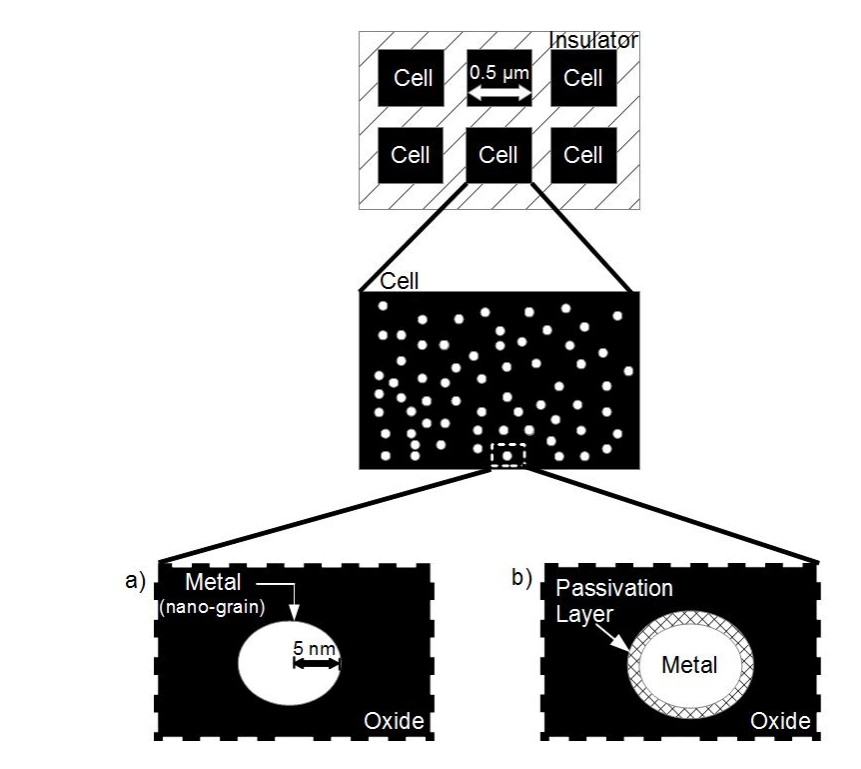How Nanoexplosives Could Help Solve One of the Biggest Mysteries of Astrophysics
One of the great mysteries of modern astrophysics is the nature of dark matter. This is the mysterious stuff that astrophysicists say must exist to provide the gravitational forces necessary to hold galaxies together.

The general consensus is that there is around five times as much dark matter as visible matter in the universe. And this raises obvious questions: what is this stuff and how can we detect it?
These questions have triggered an almighty race among physicists to detect dark matter and measure its characteristics. But the results of their experiments are puzzling and contradictory. Some labs are claiming to have detected the stuff while others appear to rule out the possibility.
What’s needed, of course, is more data from a greater variety of detectors. And today, Alejandro Lopez-Suarez at the University of Michigan in Ann Arbor and a few pals propose a novel idea. They hope to detect dark matter by the effect it has on explosives.
Their plan is to create small explosive particles that are sensitive enough to detonate when hit by a lump of dark matter. Having done this, the physicists then sit back and wait for the ensuing fireworks.
The key technology behind this plan is the development of granules of thermite materials that explode when they come into contact with an oxidizing agent. Engineers have long used micron scale granules but in recent years they have begun to develop nano-sized granules too.
The materials involved are relatively straightforward. The nanoparticles can be made of a metal such as aluminum or ytterbium and the oxidizing agent could be something as simple as iron oxide.
Given enough energy to set the reaction going, the metal heats up and reacts to form a metal oxide. “When a [particle of dark matter] strikes the metal layer, the metal may heat up sufficiently to overcome the chemical energy barrier between the metal and metal-oxide,” say Lopez-Suarez and co. “An explosion results.”
The design of such as detector is relatively simple too. It is made up of a large number of cells that are insulated from one another. Each cell consists of an oxidizing gel in which metal nanoparticles are embedded.
A full detector would need many cells, perhaps 10^14 of them, to create a target mess of say one kilogram or so. The physicists can “watch” what happens by listening for the explosions as they happen.
This design has a number of advantages over current detectors. The first is that it is relatively easy to distinguish dark matter particles from background noise created by ionizing radiation, for example.
When a particle of dark matter hits a nanoparticle, it heats up triggering a micro explosion. This heats up other nanoparticles nearby causing a chain reaction that spreads through the cell. The result is that a single cell within the detector explodes.
By contrast, ionizing radiation, such as an alpha particle, would pass through many cells causing them all to explode. So the signature of a single cell exploding can easily be distinguished from the tracks created by background noise.
Another advantage is that this chain reaction mechanism amplifies the signal from a single dark matter particle making it easier to spot. And it also has a low energy threshold allowing relatively light dark matter particles to be detected as well.
An important question, of course, is whether such detector would work. Lopez-Suarez and co have crunched through the numbers and determined that aluminum or ytterbium nanoparticles embedded in an oxidizing gel and kept it the temperature of liquid hydrogen should do the trick quite nicely.
That’s an interesting idea. The next stage would be to begin testing these materials to see how they could be combined into a prototype detector. An interesting problem for this group is how to manufacture such detector on the surface of the Earth where the background noise from ionizing radiation is likely to be high.
Many dark matter experiments are housed in deep underground mines for just this reason. This new one might also need to be housed underground and probably manufactured there as well.
There is significant interest at the moment in new types of dark matter detectors. Last year, we looked at a design involving a DNA tracking chamber that spots dark matter particles by the effect they have on single strands of DNA.
This is another equally innovative approach. It’ll be interesting to see if any of them see the light of day (so to speak, cough).
Ref: http://arxiv.org/abs/1403.8115: New Dark Matter Detectors using Nanoscale Explosives
Keep Reading
Most Popular
Large language models can do jaw-dropping things. But nobody knows exactly why.
And that's a problem. Figuring it out is one of the biggest scientific puzzles of our time and a crucial step towards controlling more powerful future models.
How scientists traced a mysterious covid case back to six toilets
When wastewater surveillance turns into a hunt for a single infected individual, the ethics get tricky.
The problem with plug-in hybrids? Their drivers.
Plug-in hybrids are often sold as a transition to EVs, but new data from Europe shows we’re still underestimating the emissions they produce.
Google DeepMind’s new generative model makes Super Mario–like games from scratch
Genie learns how to control games by watching hours and hours of video. It could help train next-gen robots too.
Stay connected
Get the latest updates from
MIT Technology Review
Discover special offers, top stories, upcoming events, and more.